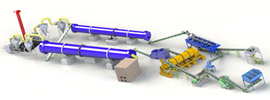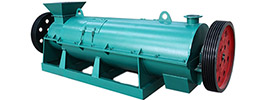Organic fertilizers offer multiple advantages over chemical fertilizers, spanning agricultural productivity, soil health, ecological security, and sustainable development. Below is a detailed analysis of these benefits:
I. Soil Improvement and Fertility Enhancement
- Organic Matter Replenishment and Structural Optimization
- Rich in humus and organic matter, organic fertilizers significantly improve soil aggregation and water/nutrient retention capacity. For instance, applications can reduce soil bulk density by 10%-20% while increasing porosity by 15%-30%, effectively mitigating soil compaction.
- Prolonged chemical fertilizer use leads to acidification and salinization, with soil pH levels in some regions dropping below 5.0, threatening arable land quality.
- Microbial Ecosystem Restoration
- Organic fertilizers introduce beneficial microorganisms (e.g., nitrogen-fixing bacteria, phosphate-solubilizing bacteria), with active microbial counts exceeding 100 million per gram of quality organic fertilizer, promoting nutrient cycling.
- Chemical fertilizers suppress microbial activity, reducing soil microbial biomass by 30%-50% over time and disrupting soil self-purification.
- Sustained Nutrient Release
- Nutrients in organic fertilizers release gradually, providing 3-6 months of efficacy, whereas chemical fertilizers suffer from rapid leaching and low utilization rates (30%-50% for nitrogen). For example, corn fields treated with organic fertilizers exhibit reduced late-season nutrient deficiencies and 5%-8% higher kernel weight.
II. Crop Quality and Stress Resistance Improvement
- Comprehensive Nutrient Supply
- Organic fertilizers supply nitrogen, phosphorus, potassium, and essential micronutrients (calcium, magnesium, sulfur, iron, zinc), meeting full crop nutritional needs. Studies show 10%-20% higher vitamin C content and 30%-40% lower nitrate levels in vegetables fertilized organically.
- Chemical fertilizers' single-nutrient approach often causes physiological deficiencies, such as tomato blossom-end rot (calcium deficiency) or apple bitter pit (calcium deficiency).
- Enhanced Stress Tolerance
- Active compounds in organic fertilizers (e.g., humic acid) induce stress-resistant proteins, improving drought tolerance by 20%-30% and disease resistance by 15%-25%.
- Chemical-dependent crops exhibit poor stress resilience, with nitrogen-overfertilized rice showing 40%-60% higher lodging rates under adverse conditions.
- Food Safety Assurance
- Organic fertilizers reduce heavy metal and pesticide residues in produce, lowering lead and cadmium levels by 20%-35% to meet green food standards.
- Excessive chemical fertilizer use contributes to soil heavy metal accumulation, with cadmium exceeding safety limits in 5%-10% of rice samples in some regions.
III. Ecological and Environmental Protection
- Non-Point Source Pollution Control
- Replacing 30% of chemical fertilizers with organic alternatives can reduce agricultural nitrogen/phosphorus runoff by 40%-60%, curbing eutrophication.
- Low nitrogen use efficiency (35% seasonal average) results in annual nitrogen losses equivalent to 18 million tons of urea in China.
- Carbon Sequestration Enhancement
- Organic fertilizer applications increase soil organic carbon stocks by 0.2-0.5 tons per acre annually, supporting carbon neutrality goals.
- Chemical fertilizer production is energy-intensive, with 1.8 tons of standard coal consumed and 4.5 tons of CO₂ emitted per ton of nitrogen fertilizer.
- Waste Valorization
- One ton of livestock manure can yield 0.3-0.5 tons of organic fertilizer, diverting waste from pollution pathways. China generates 3.8 billion tons of livestock waste annually, representing significant valorization potential.
IV. Economic and Social Benefits
- Cost Efficiency
- Low-cost organic inputs (e.g., straw, green manures) reduce fertilization costs by 20%-30%.
- Volatile chemical fertilizer prices (e.g., 80% price hike for urea in 5 years) increase agricultural risks.
- Market Growth
- The green food market expands at 15%-20% annually, driving organic fertilizer demand.
- While organic fertilizers constitute less than 10% of Chinese fertilizer use (vs. 40% in the EU), substantial growth opportunities exist.
Conclusion
Organic fertilizers deliver holistic benefits through soil-crop-environment systems management, aligning with modern agricultural transformation needs and climate resilience objectives. Integrated nutrient management (e.g., 30% organic/70% inorganic ratios) is emerging as a sustainable model to advance agricultural revolutions.
 Send us a Email
Send us a Email Wulong Industrial Cluster
Wulong Industrial Cluster Have any question?
Have any question?



















